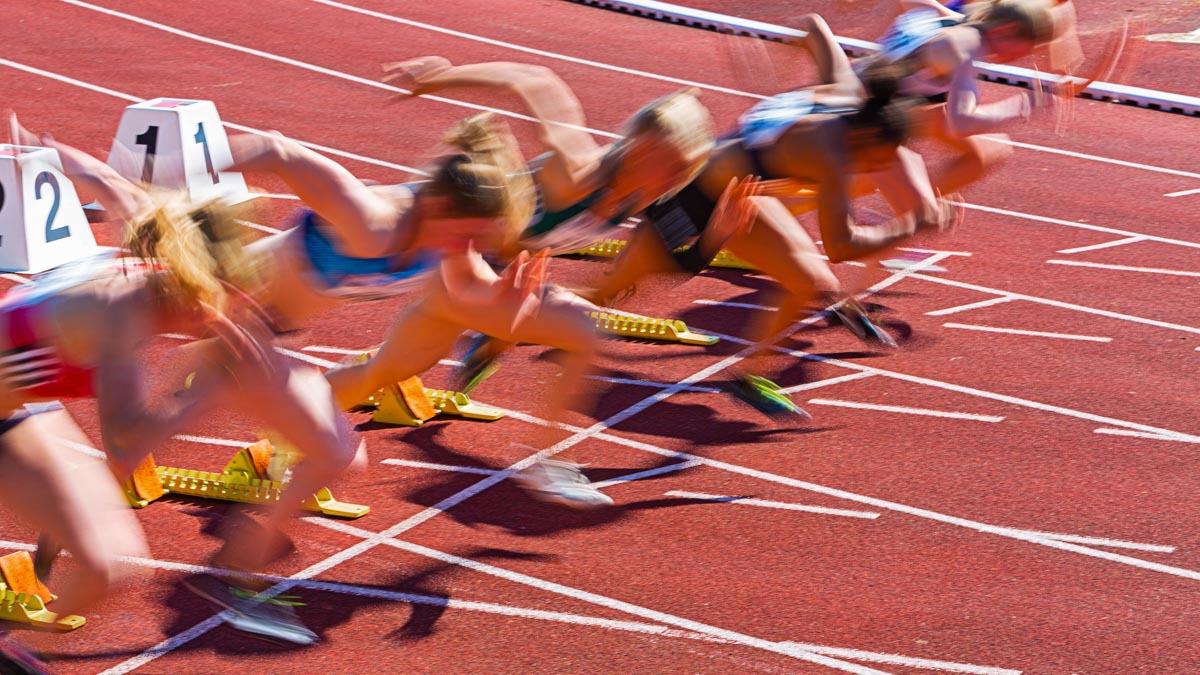After waiting an extra year, we finally got the Olympic fix we’ve been craving. This means coaches and athletes alike have been glued to screens watching sports and events that we wouldn’t normally pay any attention to. Whether you work with runners, cyclists, triathletes, rowers, or all of the above, it’s a fair bet that your clients have been watching the very best in their sport compete against rivals from across the globe. Rather than this being a passive experience, here’s how you can make the most of Olympic fever to motivate your athletes.
Motivation is a tricky topic. It’d be nice if everyone you coached was a self-propelled, ex-military beast like David Goggins, Karriss Artingstall, or Leif Babin, who would keep pushing on at full speed no matter what sport or life threw at them. But for the rest of us mere mortals, we have to navigate peaks and troughs. One day your athlete charges into an interval workout with relish, and the next, they struggle to lace up our shoes. All told, you might have 10, 50, or 100 athletes looking to you to keep them going when they don’t feel like showing up because it’s raining, they’re tired, or any one of a thousand other excuses.
So how can you utilize the Olympics to propel your clients into action even when they’re feeling low on motivation? You could start by finding some quotes and stories from well-known Olympians and their coaches to share with your group. For example, while they probably assume that Michael Phelps trained hard (duh!) to win his record-setting total of 28 Olympic medals (23 gold, three silver, and two bronze), did they know that in the buildup to the Beijing Games, he worked out with his coach Bob Bowman every single day for four years straight?
Commitment and Consistency Are Key
I was recently talking with my friend Dan John about this Phelps anecdote. If you aren’t familiar with Dan’s work, he’s a strength coach who guides everyone from track and field athletes to Navy SEALs to pro sports teams who want to get faster and stronger in a way that promotes long-term durability. On the topics of commitment and consistency, Dan shared a lesson from one of his coaching mentors. While still a teenager (he’s now 64 and still going strong, literally), Dan asked a grizzled veteran what he needed to do to earn a college athletic scholarship. The coach replied, “Lift weights three days a week and throw the discus four days a week for eight years.”
Dan remarked that the first two parts of this advice are easy for people to digest. Okay, we’re talking about a seven-day training week (unless your clients double up their gym work and runs/rides/swims on certain days), but it seems eminently doable. But it’s the last part of the sentence that’s problematic for many athletes. Which of your athletes would commit to following your programming for eight straight years? You can probably count them on one hand. But those are the ones who will invariably make the most progress and stay in the sport because of their determination and consistency.
While you can’t get them to sign on the dotted line for two full quadrennials right now, you can use your clients’ Olympics-related enthusiasm to kickstart their program. As the old Chinese proverb states, “The best time to plant a tree was 20 years ago. The second best time is now.” When many of your athletes are feeling inspired by the world-beating performances, encourage them to lock-in to this commitment mentality. Even if they aren’t targeting a place on Team USA in the 2024 Paris Games, there’s no better time to redouble their commitment to training smart, refueling well, and recovering like a boss than right now.
Going for Golden Goals
Speaking of the Paris Olympics, you could use the upcoming quadrennial as a conversation starter about the importance of goals. The moment most Olympians finish their events in Tokyo, they’re going to be setting their sights firmly on France. A logical progression for such an athlete could be broken down into three main stages: earning a qualifying spot by finishing in the top two or three at the national trials, making it to the final, and then standing on the podium or winning gold.
Suggest that your own clients do likewise by identifying three big, ambitious outcome goals. Then have them share these with you so you can sit down and work backwards to identify some milestones along the way. Next, formulate a program that will help them hit these targets. From there, decide on some numbers that will indicate progress and which wearables the athlete might want to use to collect the relevant data. Finally, calendar regularly scheduled check-ins to monitor their outcomes and, when needed, course correct to keep them headed in the right direction.
Our collective obsessions with all things Olympics won’t last. Soon, athletes and coaches will be heading home from Tokyo and getting back to the grind. And your clients will continue to fit in training around work, family, and other commitments. Soon enough, we’ll all have put the Games out of our minds and moved on. But you can keep the flame burning inside the members of your group if you can bottle a little of that Olympic spirit and use it to shine a spotlight on motivation, work ethic, consistency, and goal setting.


